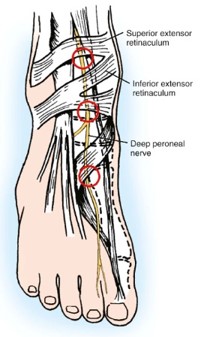Deep Peroneal Nerve

Deep Peroneal Nerve

Deep Peroneal Nerve
Deep Peroneal Nerve
Dr. Shari Moore discusses the deep peroneal nerve and how it can cause pain in the foot and ankle.
Causes of Pain – Deep Peroneal Nerve

Treatment of the Deep Peroneal Nerve
There are several non-surgical treatments that could alleviate the discomfort caused by a Morton’s Neuroma, including:
Nerve resection
−Traditional treatment
Decompression surgery
Sign up to be notified when new educational content is available!
Finding Care
Dr. Kent DiNucci describes how to find care for a nerve problem and how to prepare for visiting your doctor.
If you are suffering from compression symptoms, be sure to consult a nerve specialist
PAGE CONTRIBUTORS
PAGE CONTRIBUTORS

Shari Moore, DPM

Kent DiNucci, DPM
Podiatrist
Ankle and Foot Clinic
Nebraska

Kevin Powers, DPM
Podiatrist
The Center for Lower Extremity Nerve Surgery
Indiana
The content on or accessible through globalnervefoundation.org is for informational purposes only. This information is not a substitute for professional advice or expert medical services from a qualified healthcare provider
| Cookie | Duration | Description |
|---|---|---|
| cookielawinfo-checkbox-analytics | 11 months | This cookie is set by GDPR Cookie Consent plugin. The cookie is used to store the user consent for the cookies in the category "Analytics". |
| cookielawinfo-checkbox-functional | 11 months | The cookie is set by GDPR cookie consent to record the user consent for the cookies in the category "Functional". |
| cookielawinfo-checkbox-necessary | 11 months | This cookie is set by GDPR Cookie Consent plugin. The cookies is used to store the user consent for the cookies in the category "Necessary". |
| cookielawinfo-checkbox-others | 11 months | This cookie is set by GDPR Cookie Consent plugin. The cookie is used to store the user consent for the cookies in the category "Other. |
| cookielawinfo-checkbox-performance | 11 months | This cookie is set by GDPR Cookie Consent plugin. The cookie is used to store the user consent for the cookies in the category "Performance". |
| viewed_cookie_policy | 11 months | The cookie is set by the GDPR Cookie Consent plugin and is used to store whether or not user has consented to the use of cookies. It does not store any personal data. |